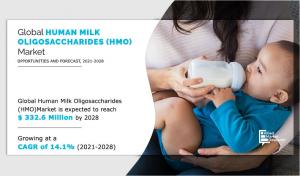Human Milk Oligosaccharides (HMO) Market
Leading to increased consumption of infant formulas and the emergence of alternative animal milk oligosaccharides.
— Allied Market Research
WILMINGTON,NEW CASTLE, DELAWARE, UNITED STATE, April 1, 2024 /EINPresswire.com/ — According to a new report published by Allied Market Research, titled “Human Milk Oligosaccharides (HMOs) Market by Type, Application, and Distribution Channel: Global Opportunity Analysis and Industry Forecast, 2021–2028, the global human milk oligosaccharides (HMO) market size was valued at $125.9 million in 2020 and is estimated to reach $332.6 million by 2028, registering a CAGR of 14.1% from 2021 to 2028.
👉 𝐆𝐞𝐭 𝐅𝐮𝐥𝐥 𝐀𝐜𝐜𝐞𝐬𝐬 𝐭𝐨 𝐒𝐚𝐦𝐩𝐥𝐞 𝐂𝐨𝐩𝐲
Drivers: Increase in Infant Population
According to UN data, there is a staggering rate of global births, with over 250 babies born per minute and an average of 353,000 births per day, resulting in over 130 million newborns annually. This surge directly correlates with heightened consumption of infant formulas worldwide. Various factors contribute to this heightened consumption, including the rising number of working mothers postpartum, challenges with lactation, and improved nutritional alternatives for infants. Projections by the UN indicate a global population surge to 9.6 billion by 2050. Human milk oligosaccharides serve as a critical component in the infant nutrition industry, utilized in the production of various infant formulas and baby foods. The continuous expansion of the population is anticipated to drive sales of human milk oligosaccharides as a key ingredient in infant formulas in the foreseeable future. Notably, China, with 15.23 million births recorded in 2018, according to the National Bureau of Statistics, presents a significant revenue-generating opportunity for market manufacturers.
Restraints: High Production Costs Associated with HMO-Composed Supplements and Food Products
The development and commercialization of HMO products are intricate, costly, and uncertain endeavors. Success in product development hinges on technological advancements, consumer demand, and adherence to legislative and regulatory frameworks. Substantial investments are necessary for the research and development of specific HMO types for use in dietary supplements or functional foods like prebiotics. These products are formulated and manufactured in compliance with international food regulations, necessitating highly sterilized and technologically advanced equipment and processes. Consequently, the high production costs contribute to elevated final product prices, further compounded by expenses related to marketing and distribution. Despite consumer awareness of the health benefits associated with these premium functional food products, their affordability remains a constraint, particularly in price-sensitive markets of developing countries in Asia and Africa.
Opportunities: Emergence of Alternative Animal Milk Oligosaccharides
Bovine milk oligosaccharides are poised to play a significant role in infant nutrition, as indicated by a laboratory study from RMIT University, Australia, published in the British Journal of Nutrition, highlighting the prebiotic properties of goat milk infant formula akin to breast milk. Companies like Ausnutria Nutrition BV in the Netherlands offer goat milk-based infant formulas under brands such as Kabrita. Additionally, camel milk presents another viable source, exemplified by the UAE-based Emirates Industry for Camel Milk and Products launching a camel milk-based baby formula enriched with high iron content. These animal milk oligosaccharide sources are anticipated to garner acceptance within the infant formula ingredient markets in the foreseeable future.
👉 𝐓𝐚𝐥𝐤 𝐭𝐨 𝐨𝐮𝐫 𝐄𝐱𝐩𝐞𝐫𝐭
Challenges: Complex Industrial Processes for Oligosaccharide Extraction from Milk
Developing large-scale or industrial processes to extract oligosaccharides from mammalian milk poses significant challenges, primarily centered around achieving high purity levels. The extraction process must effectively eliminate simple sugars lacking prebiotic properties, such as lactose, glucose, and galactose, while maximizing product yield. Techniques like lactose hydrolysis combined with membrane filtration have shown promise, albeit with inherent complexities, necessitating further advancements through rigorous research and development endeavors.
The Asia Pacific region dominates the human milk oligosaccharides market, boasting a value of USD 92.6 million in 2021 and projected growth to USD 321.8 million by 2027, at a CAGR of 23.2%. This dominance is attributed to its dense population, particularly in countries like China and India, which experience annual surges in infant populations. This trend significantly influences the infant formula market, where HMOs serve as vital ingredients in formulating infant foods and supplements.
New Zealand emerges as a major exporter of infant formulas to China, driving substantial revenue for the country and fueling significant growth prospects for HMO-based infant formulas during the forecast period. Conversely, Japan anticipates gradual growth in the HMO market due to declining birth rates, as evidenced by a 2.8% decrease in births recorded in 2020 compared to 2019, marking the lowest figure since 1899, according to the World Economic Forum.
Key players in the human milk oligosaccharides market include DSM (Netherlands), BASF SE (Germany), Chr. Hansen Holding A/S (Denmark), DUPONT (US), and Royal FrieslandCampina N.V. (Netherlands).
👉 𝐆𝐞𝐭 𝐑𝐞𝐩𝐨𝐫𝐭 𝐂𝐮𝐬𝐭𝐨𝐦𝐢𝐳𝐚𝐭𝐢𝐨𝐧
Market Metrics:
Market Size in 2020: USD 125.9 million
Market Size in 2028: USD 332.6 million
Market Growth Rate: CAGR of 14.1% from 2020 to 2028
Units Considered: Value (USD), Volume (KT)
Segments Covered: By Type, Application, and Concentration
Regions Covered: North America, Europe, Asia Pacific, South America, and RoW
Market Growth Drivers: Increased application of HMOs in functional foods and rising demand in infant formula
Market Opportunities: Emergence of alternative animal milk Oligosaccharides
Largest Growing Region: Asia Pacific, encompassing China, India, Japan, Australia, and New Zealand
𝐀𝐛𝐨𝐮𝐭 𝐔𝐬
Allied Market Research (AMR) is a full-service market research and business-consulting wing of Allied Analytics LLP, based in Portland, Oregon. Allied Market Research provides global enterprises as well as medium and small businesses with unmatched quality of “Market Research Reports” and “Business Intelligence Solutions.” AMR has a targeted view of providing business insights and consulting to assist its clients in making strategic business decisions and achieving sustainable growth in their respective market domain.
We have professional corporate relations with various companies and this helps us dig out market data that helps us generate accurate research data tables and confirms utmost accuracy in our market forecasting. Allied Market Research CEO Pawan Kumar is instrumental in inspiring and encouraging everyone associated with the company to maintain high-quality data and help clients in every way possible to achieve success. Each and every piece of data presented in the reports published by us is extracted through primary interviews with top officials from leading companies in domain concerned. Our secondary data procurement methodology includes deep online and offline research and discussion with knowledgeable professionals and analysts in the industry.
Prashant Shete
Allied Market Research
+1 5038946022
email us here
Visit us on social media:
Facebook
Twitter
LinkedIn
![]()
Article originally published on www.einpresswire.com as Human Milk Oligosaccharides Market Projected to Reach $332.6 Million by 2028, Driven by Increasing Infant Population





